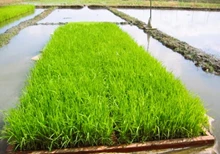
We’ve been hearing a lot about the Farm-to-table movement in India- and it’s a while since this phrase has been buzzing around. Let’s check in and see what the Farm-to-table movement is looking like and how far we have progressed in it. But just to be clear, we’ll get into a brief introduction of what the Farm-to-table movement is and what exactly does it entail?
The farm-to-table movement is just as simple as it sounds. It can be defined quite literally- it is the movement of farm produce directly from the farmer’s farm to the consumer’s table. Or to define it in a way that sounds a bit more formal, Farm to table, which is sometimes known as farm to fork, is a social movement where restaurants buy their ingredients directly from farmers who own local farms.
And now, why is this important? In India, the farm-to-fork chain speaks about direct acquisition and simplification of the agricultural value chain. This means it will have people in direct contact with the farmers. A simplification of the value chain also cuts out and weeds out the middlemen from the process.
The Middlemen form a section of the agricultural value chain that are often exploitative- whose monetary gains come at the cost of the Indian farmer. They are a big reason as to why the Indian farmer despite providing food to the largest population in the world- still cannot earn a decent dime.
Weeding out middlemen- significantly improves the farmer’s income. The farmers can receive the price that the consumer pays which often times is manifold the price that the farmer initially sells for. And the consumer also benefits from this- because the mechanism of direct sourcing ensures credibility and safety.
Say, a consumer only wishes to consume organic produce. A direct contact with the farmer will assure the consumer that the farm the produce grows in is indeed organic. However, if the same product were to come through the entire convoluted value chain- the consumer would never be able to be sure.
The Farm-to-table movement has the potential to transform the Indian agricultural landscape and foster a more sustainable and ethical food system. By promoting local farming, it encourages the consumption of fresh, seasonal produce while reducing the carbon footprint associated with long-distance transportation. Moreover, this movement helps in preserving traditional farming practices and cultural diversity, as consumers become more aware of the origins and stories behind their food.
While the Farm-to-table movement has made significant progress in India, there is still work to be done. Scaling up this model requires infrastructure development, logistical support, and awareness campaigns to educate consumers about the benefits of sourcing directly from farmers. Additionally, collaborations between farmers, restaurants, and policymakers are crucial to creating a supportive ecosystem for this movement to thrive.
As the Farm-to-table movement gains momentum, it has the potential to reshape the Indian food industry and foster a deeper connection between producers and consumers. By embracing this movement, we can collectively contribute to a more sustainable, fair, and nourishing future for all stakeholders involved in the agricultural value chain.











